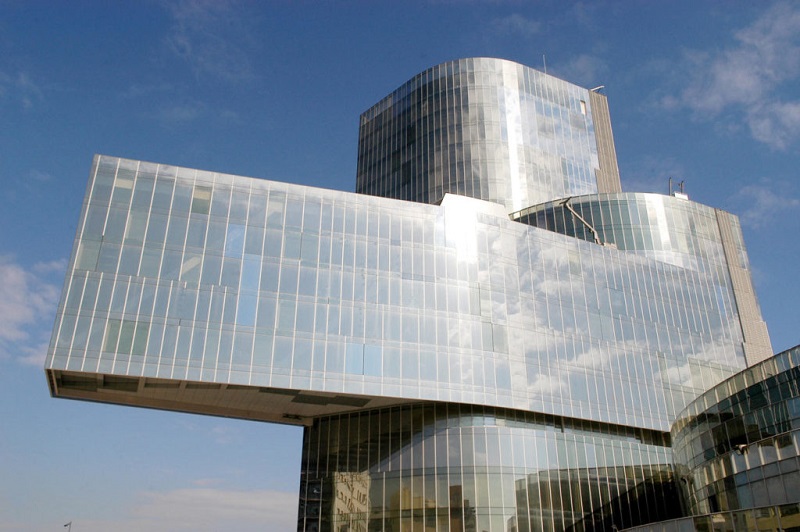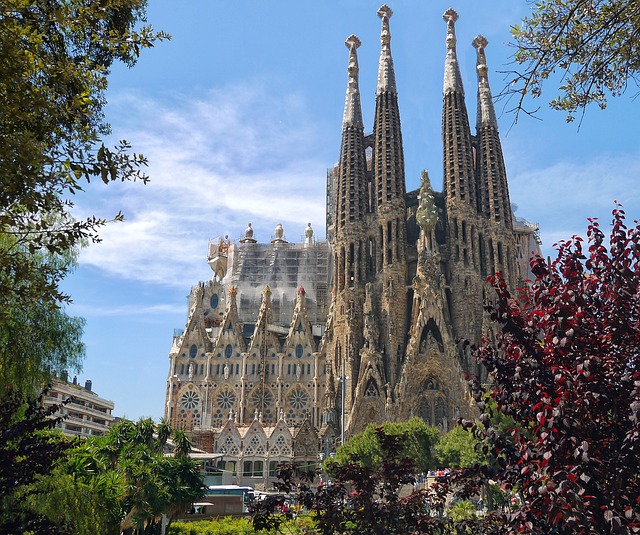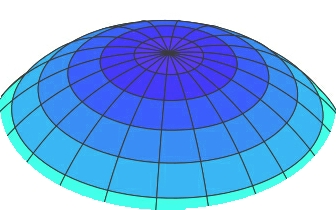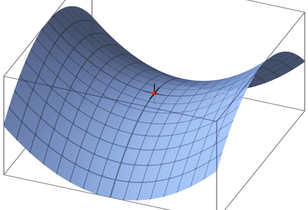Geometric form

|

|
Geometric forms are forms that can be constructed using geometry, such as squares, rectangles, circles, cones, cubes, and so on. Geometric forms are commonly found in architecture, structural and civil engineering.
This is as opposed to 'organic' forms which are generally complex, irregular or asymmetrical, and cannot easily be constructed using geometry. naturally-occurring forms are often considered to be 'organic'.

|

|
Two-dimensional geometric forms are often defined by a chain of points or vertices are connected by lines. These are referred to as polygons (triangles, squares, pentagons, hexagons, and so on). They can also be bounded by curves (circles, ellipses, and so on).
Three-dimensional geometric forms are often defined by two-dimensional faces enclosed by lines that connect a set of vertices. These are referred to as polyhedrons (cubes, pyramids, cones, and so on). They can also be bounded by curved surfaces (ellipsoids, spheres, and so on).

|

|
| Synclastic | Anticlastic |
[edit] Related articles on Designing Buildings
Featured articles and news
Building Safety Regulator reforms
New roles, new staff and a new fast track service pave the way for a single construction regulator.
Cooling centres and cool spaces
Managing extreme heat in cities by directing the public to places for heat stress relief and water sources.
Winter gardens: A brief history and warm variations
Extending the season with glass in different forms and terms.
Restoring Great Yarmouth's Winter Gardens
Transforming one of the least sustainable constructions imaginable.
Construction Skills Mission Board launch sector drive
Newly formed government and industry collaboration set strategy for recruiting an additional 100,000 construction workers a year.
New Architects Code comes into effect in September 2025
ARB Architects Code of Conduct and Practice available with ongoing consultation regarding guidance.
Welsh Skills Body (Medr) launches ambitious plan
The new skills body brings together funding and regulation of tertiary education and research for the devolved nation.
Paul Gandy FCIOB announced as next CIOB President
Former Tilbury Douglas CEO takes helm.
UK Infrastructure: A 10 Year Strategy. In brief with reactions
With the National Infrastructure and Service Transformation Authority (NISTA).
Ebenezer Howard: inventor of the garden city. Book review.
The Grenfell Tower fire, eight years on
A time to pause and reflect as Dubai tower block fire reported just before anniversary.
Airtightness Topic Guide BSRIA TG 27/2025
Explaining the basics of airtightness, what it is, why it's important, when it's required and how it's carried out.
Construction contract awards hit lowest point of 2025
Plummeting for second consecutive month, intensifying concerns for housing and infrastructure goals.
Understanding Mental Health in the Built Environment 2025
Examining the state of mental health in construction, shedding light on levels of stress, anxiety and depression.
The benefits of engaging with insulation manufacturers
When considering ground floor constructions.
Lighting Industry endorses Blueprint for Electrification
The Lighting Industry Association fully supports the ECA Blueprint as a timely, urgent call to action.





















